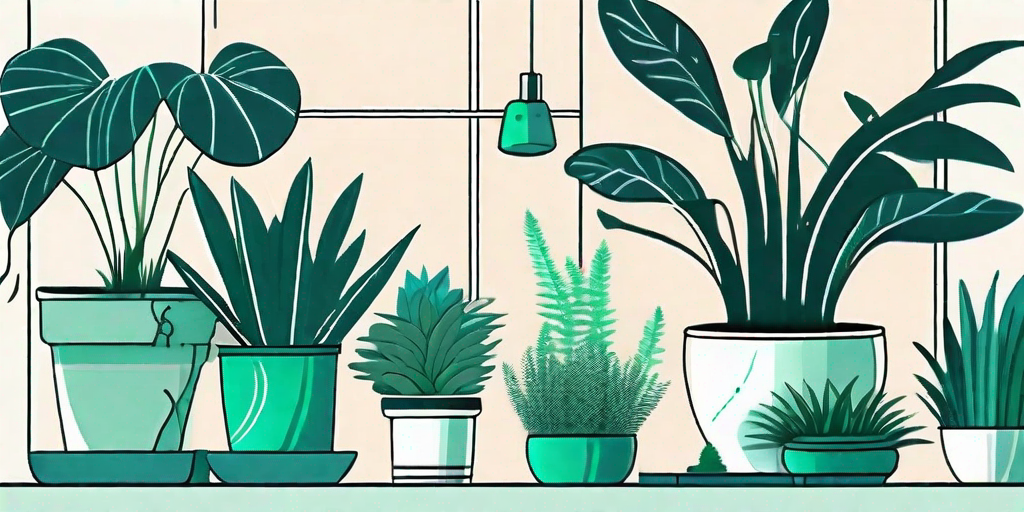
Welcome, green-thumbed readers! If your indoor jungle is looking a bit wilted and weary, it might be time for a little TLC. Repotting house plants can seem like a daunting task, but fear not! This guide will equip you with all the knowledge and skills you need to breathe new life into your leafy friends. So, don your gardening gloves, grab your trowel, and let's get dirty!
Understanding the Art of Repotting
Repotting isn't just about giving your plants a new home. It's a chance to refresh their soil, encourage new growth, and address any pesky problems like root rot or pests. It's like a spa day for your plants, and who doesn't love a good pampering?
But before we dive into the nitty-gritty, let's debunk a common myth: repotting does not necessarily mean changing to a bigger pot. Sometimes, it's simply about changing the soil and giving the roots a bit of a trim. So, don't rush out to buy a gigantic pot for your tiny succulent just yet!
When to Repot Your Plants
Just like you wouldn't want to be disturbed during a Netflix binge, plants don't appreciate being repotted at the wrong time. The best time to repot is in the spring, when plants are entering their growth phase. This gives them plenty of time to settle into their new homes before they start their growth spurt.
But how do you know when your plant really needs repotting? Well, if your plant is wilting, has yellow leaves, or its roots are growing out of the drainage hole, it's screaming for a change. Also, if the topsoil dries out quickly after watering, it might be time for a repot.
Signs Your Plant Needs Repotting
- Wilting leaves
- Yellow or brown leaves
- Roots growing out of the drainage hole
- Topsoil drying out quickly after watering
How to Repot Your Plants
Now that we've covered the why and when, let's move on to the how. Repotting can be a messy business, but it's also a lot of fun. Here's a step-by-step guide to make the process as smooth as possible.
Step 1: Gather Your Supplies
You'll need a pot, fresh potting soil, a trowel, and a pair of sharp scissors or pruning shears. If you're repotting a cactus or a prickly succulent, you might also want to have a pair of tongs and some thick gloves handy.
Step 2: Remove the Plant from Its Current Pot
This can be a bit tricky, especially if the plant is root-bound. If the plant doesn't slide out easily, try squeezing the sides of the pot to loosen the soil. If all else fails, you can cut the pot away, but be careful not to damage the roots.
Step 3: Prune the Roots and Refresh the Soil
Once you've freed your plant, gently tease out the roots and trim away any that are dead or rotting. Then, remove about one-third of the old soil from around the root ball. This will make room for fresh, nutrient-rich soil.
Step 4: Repot the Plant
Place a layer of fresh soil in the bottom of the new pot and position your plant so that the top of the root ball is about an inch below the rim of the pot. Then, fill in around the roots with more soil, pressing gently to remove air pockets.
Step 5: Water and Wait
After repotting, give your plant a good drink and place it in a shady spot for a few days to recover. Resist the urge to fuss over it; plants need a bit of peace and quiet after the stress of repotting.
Choosing the Right Pot and Soil
When it comes to pots, you're spoilt for choice. There are plastic pots, terracotta pots, ceramic pots, and even fabric pots. The key is to choose one that has good drainage to prevent waterlogging. As for size, a good rule of thumb is to choose a pot that's about 2 inches larger in diameter than the old one.
Soil, on the other hand, is not a one-size-fits-all affair. Different plants have different soil needs, so do a bit of research to find out what your plant prefers. Most houseplants are happy with a general-purpose potting mix, but succulents and cacti prefer a grittier, well-draining mix.
Frequently Asked Questions
Can I reuse old potting soil?
While it might be tempting to recycle old potting soil, it's not the best idea. Over time, soil becomes depleted of nutrients and can harbor diseases and pests. It's always best to start fresh with new, sterile potting soil.
What if my plant is too big to repot?
If your plant has outgrown its pot but is too large or unwieldy to repot, you can top-dress it instead. This involves removing the top layer of soil and replacing it with fresh soil. It's not as effective as a full repot, but it can give your plant a much-needed boost.
How often should I repot my plants?
Most houseplants need to be repotted every 12-18 months, but some slow-growing plants can go for several years without repotting. It's always best to keep an eye on your plant and look for signs that it's outgrown its current home.
Conclusion
And there you have it, folks! A comprehensive guide to reviving your indoor jungle through the art of repotting. Remember, repotting is more than just a chore; it's a chance to reconnect with your plants and give them the care they need to thrive. So, don't be afraid to get your hands dirty. Your plants will thank you for it!















